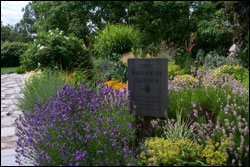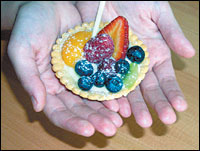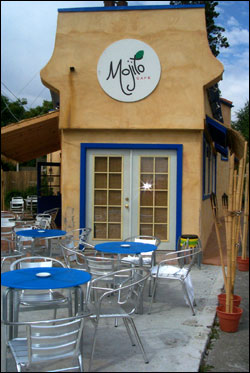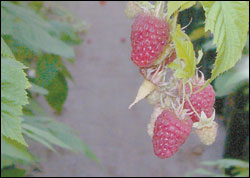TICK, TICK, SWISH. Nothing signals summer like the sound of an oscillating sprinklerwhich is bad news, however, for local reservoirs. Seattle Public Utilities estimates that water usage nearly doubles during the summer due to such sprinkling, with half of this additional demand being squandered due to improper watering and evaporation. But the Seattle gardener needn’t despair, for there’s a flood of information out there on how to change these wasteful ways.
A good starting point is your local nursery, where low-water, drought- resistant, and native plants have made a comeback against their thirsty cousins. But there’s no better resource for water-conservation info than the Waterwise Garden at the city of Bellevue’s Botanical Garden. Opened in 1994, it’s built on a residential scale and demonstrates everything from proper plant selection to efficient irrigation systems.
“The key for a homeowner is to become familiar with their site,” says Patricia Burgess, the garden’s project manager, as we survey the “Shady Woodland” section of the garden, which replicates a typical Northwest tall-tree-dominated yard. “The important things to note are the light conditions and soil-drainage characteristics of the site. Then pick the appropriate plant based upon these requirements.”
Yes, that means you should get your hands dirty by literally pawing through the earth. Lots of clay means poor drainage, but if soil is sandy, it drains well. If you’re still uncertain about the dirt, take a sample in a plastic bag to your nursery. Then match the requirements on a plant’s tag to your yard’s soil and light conditions. Sunset’s Western Garden Book is also an excellent resource for descriptions of plant requirements and characteristics.
IN THE SHADY WOODLAND grow two of Burgess’ favorite plants: oakleaf hydrangea and Daphne odora. Even though these perennials require little summer watering, they still provide a bounty of color. The hydrangea offers a brilliant summer bouquet of white flowers and beautiful fall foliage, while the Daphne provides a refreshing fragrance in the winter. Another excellent low-water plant is the very popular lily, which requires no watering after the bulb is planted.
Drought-tolerant plants aren’t limited to shady areas; there are numerous plants, from culinary herbs to ornamental flowers, that love full-sun exposure. But with the tolerance of the sun also come concerns about soil. Most full-sun plants like good drainage and can’t tolerate damp soil like their woodland cousins. For example, lavender can withstand our common clay-rich soil if that earth is mixed with compost, which provides nutrients and promotes drainage.
Yet Burgess cautions that when planting drought-tolerant plants, they need watering and attention until they’re fully established, which usually takes one to two years. Then rainfall and minimal summer watering will suffice.
BUT REMEMBER THAT low-water yards start at the spigot. Systems as complex as computerized drip-irrigation systems are available, but can cost hundreds, even thousands of dollars. One easy and inexpensive garden staple is the soaker hose (typically made from recycled tires, so extra green points there), which slowly releases water to permeate the soil with minimal runoff.
Burgess also explains that mulch is another excellent way to reduce water loss. “Mulching slows evaporation, keeps down weeds, and slows erosion.” Organic mulch, such as bark, also has the advantage of adding nutrients to the soil as it breaks down.
Water-wise gardening has its roots in the Xeriscape (or dry gardening) standards developed by the Associated Landscape Contractors of Colorado in 1981, which amount to seven principles designed to promote water efficiency. Although our climate isn’t so arid, some of those same valuable principles have taken hold here over the past two decades.
After all, the Puget Sound region is still subject to summertime dry spells. Meaning that if you turn off the ticking sprinkler, let your lawn naturally yellow-out and die this July and August, it’ll come back in the rainy fall. Or you could rip the whole damn costly, chemically dependent, labor-dependent thing out and turn to a landscape of self- sufficient Northwest plants that require little watering or hand care. Burgess will be happy to show them to you.








